When the Ice Releases Its Dead: The Dangerous Intersection of Arctic Drilling and Dismantled Public Health
Trump's Arctic drilling meets RFK Jr.'s gutted CDC—and ancient plagues are waiting
Author’s Note: I’ve been obsessed with this scenario since the early 1990s. What is different is that I also saw the risk of this through the lens of a responsible and robust public health apparatus. I never thought I would be contemplating diseases being released from the permafrost during the time of Trump and RFK Jr.
A twelve-year-old boy tends his family’s reindeer across the endless white expanse of Siberia’s Yamal Peninsula in the summer of 2016. Within days, he’s dead—Russia’s first anthrax fatality in 75 years. The killer? A reindeer carcass, infected with anthrax and buried in permafrost since possibly the 1940s, thawed by that summer’s unprecedented heat wave and released its deadly cargo of spores into the modern world.
The boy’s death was no freak accident but a preview of coming attractions. That brutal summer saw 2,300 reindeer perish and 90 people hospitalized, all because the region had stopped bothering to vaccinate against anthrax in 2007. After all, who worries about diseases locked in ice that’s been frozen since before Stalin?
Here’s what should keep you up at night: scattered across northern Russia alone are some 7,000 burial sites packed with diseased carcasses, many lurking just beneath the surface—because have you ever tried to dig a proper grave in permafrost? It’s like attacking concrete with a spoon. These aren’t just graves; they’re biological time bombs, and the Arctic is warming three times faster than anywhere else on Earth.
But first, a word about permafrost itself, that unsung hero of planetary biosecurity. Think of it as nature’s deep freeze, a massive underground layer of soil, rock, and ice that’s remained frozen for at least two consecutive years—though much of it has been locked solid for millennia. This isn’t just frozen dirt; it’s a vast cryogenic storage facility for everything from mammoth carcasses to ancient forests to microscopic organisms that predate human civilization. When permafrost thaws, it doesn’t just turn to mud—it releases whatever has been preserved within it, perfectly intact, like a horror movie where the monster emerges from the ice.
The Perfect Storm
Enter Donald Trump, stage right, wielding his Sharpie like a magic wand. His latest executive orders would fling open the Arctic National Wildlife Refuge to drilling and reverse every Biden-era protection faster than you can say “environmental catastrophe.” The President calls it essential for “economic and national security”—because nothing says security quite like poking holes in nature’s biosecurity vault.
Here’s what’s particularly rich about this whole enterprise: Executive orders were designed to be administrative tools for implementing existing law, not a way to perform an end-run around the entire regulatory apparatus. They weren’t meant to replace the methodical scientific review processes that, boring as they may be, actually keep people from dying horrible deaths. But who needs the Clean Air Act’s careful provisions or the National Environmental Policy Act’s tedious insistence on studying impacts when you can just sign your name with a flourish and call it done?
The timing of this Arctic gold rush couldn’t be worse. Just as Trump is ordering drills into the permafrost, his Health and Human Services Secretary Robert F. Kennedy Jr.—yes, that Kennedy, the one who thinks vaccines cause autism—has thrown the Centers for Disease Control into complete chaos. CDC Director Susan Monarez? Fired after less than a month for the unforgivable sin of insisting on “scientific review.” Top CDC officials? Fleeing like rats from a particularly deranged ship.
Let me explain what the CDC actually did before Kennedy took a wrecking ball to it. The agency ran something called the National Notifiable Diseases Surveillance System—a network connecting every hospital, clinic, and lab in America. When unusual symptoms appeared anywhere, the system flagged them. The CDC’s Epidemic Intelligence Service officers—disease detectives, essentially—would investigate within hours. They maintained real-time data streams from sentinel sites, tracking everything from unusual fever patterns to clusters of respiratory symptoms.
Kennedy has gutted this entire apparatus. The surveillance officers? Fired or reassigned. The data systems? Defunded. The laboratory networks that could rapidly identify novel pathogens? Shuttered. We’ve gone from having thousands of trained eyes watching for the next outbreak to having barely anyone at all. It’s like dismantling every smoke detector in a building, then playing with matches.
What Lurks Beneath
The Siberian anthrax incident was merely the appetizer. The main course of potential horrors includes the intact 1918 Spanish flu virus, already discovered in bodies buried in Alaskan permafrost. Let’s pause here for a history lesson that should make your blood run cold: the Spanish flu killed somewhere between 50 and 100 million people in just two years—more than World War I and World War II combined. It turned healthy adults into corpses within hours, their lungs filling with fluid until they drowned in their own blood. One fifth of the world’s population was infected. Bodies piled up faster than they could be buried.
And then there’s smallpox, whose DNA has also been found preserved in the permafrost. Smallpox—which we so triumphantly eradicated in 1980—killed 300 million people in the 20th century alone. It’s a ghastly disease: high fever, followed by a rash that turns to fluid-filled pustules covering the entire body. Victims who survive are often left blind and severely scarred. Modern populations have zero immunity. Zero. The last person vaccinated against smallpox is now in their mid-forties. If smallpox emerged from the permafrost today, it would tear through the population like tissue paper.
But here’s where it gets properly terrifying: Arctic drilling doesn’t politely wait for nature to thaw these biological nightmares—it speeds up the process with the enthusiasm of a toddler with a blowtorch. Every drilling operation generates heat, pumps heated fluids deep underground, and creates channels for warm air to penetrate layers that have been frozen since before humans invented agriculture. Each well is essentially a $100 million straw, sucking up whatever prehistoric cocktail of pathogens has been marinating down there for millennia.
The Blind Leading the Blind
Meanwhile, back at what used to be our pandemic defense headquarters, Bobby Kennedy Jr. has been playing conductor of the world’s most catastrophic orchestra. He’s canceled NIH studies on vaccine hesitancy—because why would we want to understand that?—and shuttered the network of centers designed to prevent future pandemics. In a masterstroke of vindictive idiocy, he fired all 17 members of the CDC’s Advisory Committee on Immunization Practices, replacing actual scientists with people who think measles parties are a reasonable alternative to vaccination.
The NIH funding cuts are particularly delicious in their stupidity: slashing indirect research support from 50% to 15%, effectively telling America’s research universities to go pound sand. Two thousand scientists have signed a letter describing a “climate of fear.” Angela Rasmussen, a virologist, warns that the restructuring “will severely impair if not completely abrogate most of our national capacity to respond to health emergencies.”
Here’s what Kennedy’s policies actually means in practical terms: A novel pathogen could emerge from Arctic drilling operations and circulate undetected for months, even years. Why? Because he fired the people who know how to look for it. He defunded the laboratories that would identify it. He has dismantled the early warning systems that would flag unusual disease patterns.
Consider this entirely plausible nightmare scenario: A drilling crew in ANWR hits a pocket of thawed permafrost containing a pathogen that hasn’t circulated in humans for 10,000 years. The first infected workers might show mild symptoms—a cough, some fatigue—nothing that would raise alarms in our newly lobotomized public health system. They rotate back to Anchorage, then Seattle, then home to wherever. The pathogen finds animal reservoirs—Arctic foxes, migrating birds, domestic livestock. By the time someone notices an unusual cluster of respiratory deaths six months later, it’s already in twelve states and three countries.
In a functioning system, we’d catch this in weeks. In Kennedy’s system? We might not catch it at all until the bodies start piling up.
Democratic governors, have formed their own little public health alliance, essentially admitting that the federal government has abandoned ship. “You’re on your own,” is the message from Washington. It’s like asking individual homeowners to coordinate their garden hoses during a five-alarm fire. But at best this is a patchwork, bandaid solution that will be flawed.
Consider this comparison: COVID-19, which brought the world to its knees, has a fatality rate of roughly 1-2%. Smallpox? Try 30%. The 1918 flu in some communities? Up to 20%. And these are diseases we know. What’s sleeping in the permafrost could be worse—pathogens that evolved when the human immune system was fundamentally different, or before humans existed at all.
Imagine—and this isn’t science fiction, this is what keeps epidemiologists awake at 3 AM—a drilling operation in ANWR punctures a layer of permafrost containing something genuinely novel. Not just another flu strain, but something our species has never encountered. In the before times (let’s call them the “competent government era”), this would trigger an immediate response: containment protocols, rapid genetic sequencing, vaccine development, contact tracing.
But now? The CDC is hemorrhaging talent faster than a hedge fund in a market crash. The NIH is effectively neutered. Kennedy has expressed charming interest in reducing childhood vaccines, because what modern America really needs is a population with the immunological defenses of medieval peasants.
The roughnecks and engineers at these Arctic drilling sites would be patient zero through patient fifty before anyone noticed something was amiss. These aren’t isolated hermits—they’re connected to global supply chains, flying in and out on rotation, mingling in airports and hotels from Anchorage to Houston. Every shift change becomes a potential superspreader event, every supply delivery a new vector for transmission.
What We Refuse to Learn
The 2016 Siberian anthrax outbreak taught us that Arctic warming releases ancient diseases, that discontinued vaccination programs leave us vulnerable, and that remote doesn’t mean contained. That was nature acting alone, a passive thaw. Now we’re proposing to actively drill, baby, drill into these same frozen plague vaults while Bobby Kennedy plays amateur hour with our biosecurity.
Then came COVID-19, which should have been our Pearl Harbor moment for pandemic preparedness. Instead, we’ve decided the real lesson was that we had too much public health infrastructure. It’s like surviving a plane crash and concluding the problem was too many safety regulations.
The Trump administration plans to open 82% of the National Petroleum Reserve-Alaska to drilling. Every well is a new puncture wound in Earth’s defensive membrane. Meanwhile, measles—measles!—has reached a 20-year high in America. This is a disease we conquered in 2000, now roaring back because we’ve decided that maybe those anti-vaxxer moms on Facebook were onto something.
And here’s the kicker: there are no environmental impact studies in place. No assessments of how this drilling will affect Arctic wildlife—the very animals that could become disease reservoirs. No analysis of what happens when you combine industrial heat with ancient ice. Trump’s executive orders bypassed all of it, because who needs to study consequences when you have a Sharpie?
Even the oil industry, not exactly known for their abundance of caution, has been notably unenthusiastic about Arctic drilling. They failed to show up for a recent lease sale. Perhaps their actuaries have run the numbers on “accidentally starting a global pandemic” and found the liability concerning.
Here’s what the next pandemic could look like with our current preparedness level—which is to say, none: It starts slowly, misdiagnosed as flu or pneumonia. Hospitals see unusual cases but have no mechanism to connect the dots—that surveillance system was defunded. By the time someone notices a pattern, it’s in multiple cities. But the CDC’s response team? Gutted. The research labs that would develop treatments? Defunded. The vaccine development programs? Canceled by Kennedy because he read something scary on the internet.
The permafrost pathogen establishes itself in wildlife populations—remember, diseases need reservoir hosts, and the Arctic is full of them. Migratory birds carry it south. Foxes and wolves spread it through their ranges. Domestic animals become infected. Now you have what epidemiologists call a “endemic zoonotic disease”—something that can’t be eradicated, constantly jumping from animals to humans, a permanent new threat in a world already struggling with the old ones.
Cities start recording unusual death clusters. Hospitals overflow—but this time, there’s no Operation Warp Speed coming to save us, because we’ve fired everyone who knows how to develop vaccines quickly. International health organizations try to help, but America, having torched its reputation as a global health leader, finds other nations reluctant to share resources or expertise.
The economy crashes not in weeks but in days as supply chains collapse. The stock market makes 2008 look like a minor correction. Social order breaks down in ways that make the COVID toilet paper shortages seem quaint. And through it all, the drilling continues, because stopping would be admitting error, and this administration doesn’t do that.
Within eighteen months, what started as a few sick workers in Alaska has killed millions globally. Not because the pathogen was unstoppable—with proper surveillance and response, it could have been contained in weeks—but because we deliberately destroyed our ability to stop it. We traded pandemic preparedness for drilling rights, exchanged the CDC’s expertise for Kennedy’s conspiracy theories, swapped scientific rigor for executive orders scrawled in Sharpie.
This isn’t dystopian fiction. This is the logical endpoint of current policy. We’re standing at the edge of the abyss, drill in hand, while the people charged with pulling us back from the brink are busy pushing us forward.
The boy who died in Siberia in 2016 was a warning written in blood and anthrax spores. The question isn’t whether we’ll release something catastrophic from the permafrost—it’s whether we’ll be even remotely prepared when we do. And right now, as we drill deeper into Earth’s frozen morgue while dismantling our medical defenses, the answer is clear: We’re not just unprepared. We’re deliberately, systematically, enthusiastically making ourselves vulnerable.
The permafrost doesn’t care about making America great again. It will release what it holds when disturbed, and what emerges won’t check your voter registration before it kills you.
Subscribers only - click here to check out the ongoign series on the Rublican Party from Nixon to Trump: a primmer to use to understand the modern GOP.
Josh Powell is a healthcare writer, consultant, and former CEO of a leading multidisciplinary surgical center in New York. Most recently, he served as Project Manager for Columbia University’s NIH-funded HEALing Communities Study, addressing the opioid epidemic through evidence-based interventions.
His book, “AIDS and HIV Related Diseases,” published by Hachette Book Group, established him as an authoritative voice in healthcare. Powell’s insights have appeared in prestigious publications including Politico and The New England Journal of Medicine. As a recognized expert, he has been featured on major media outlets including CBS, NBC, NPR, and PBS.
In an era where independent journalism and free expression face mounting pressures, your support makes all the difference. By subscribing to The Powell House Press, you’re not just accessing premium content—you’re directly funding independent commentary and analysis free from corporate influence or editorial interference. Paid subscriptions allow me to continue investigating important stories, sharing unfiltered perspectives, and maintaining the editorial independence that makes honest journalism possible. When you invest in independent writers, you’re investing in the principle that diverse voices and open dialogue are essential to a healthy democracy. Your subscription helps ensure that independent writers can continue to ask hard questions, challenge conventional wisdom, and provide the kind of fearless commentary that mainstream outlets often can’t or won’t publish.
Copyright Notice



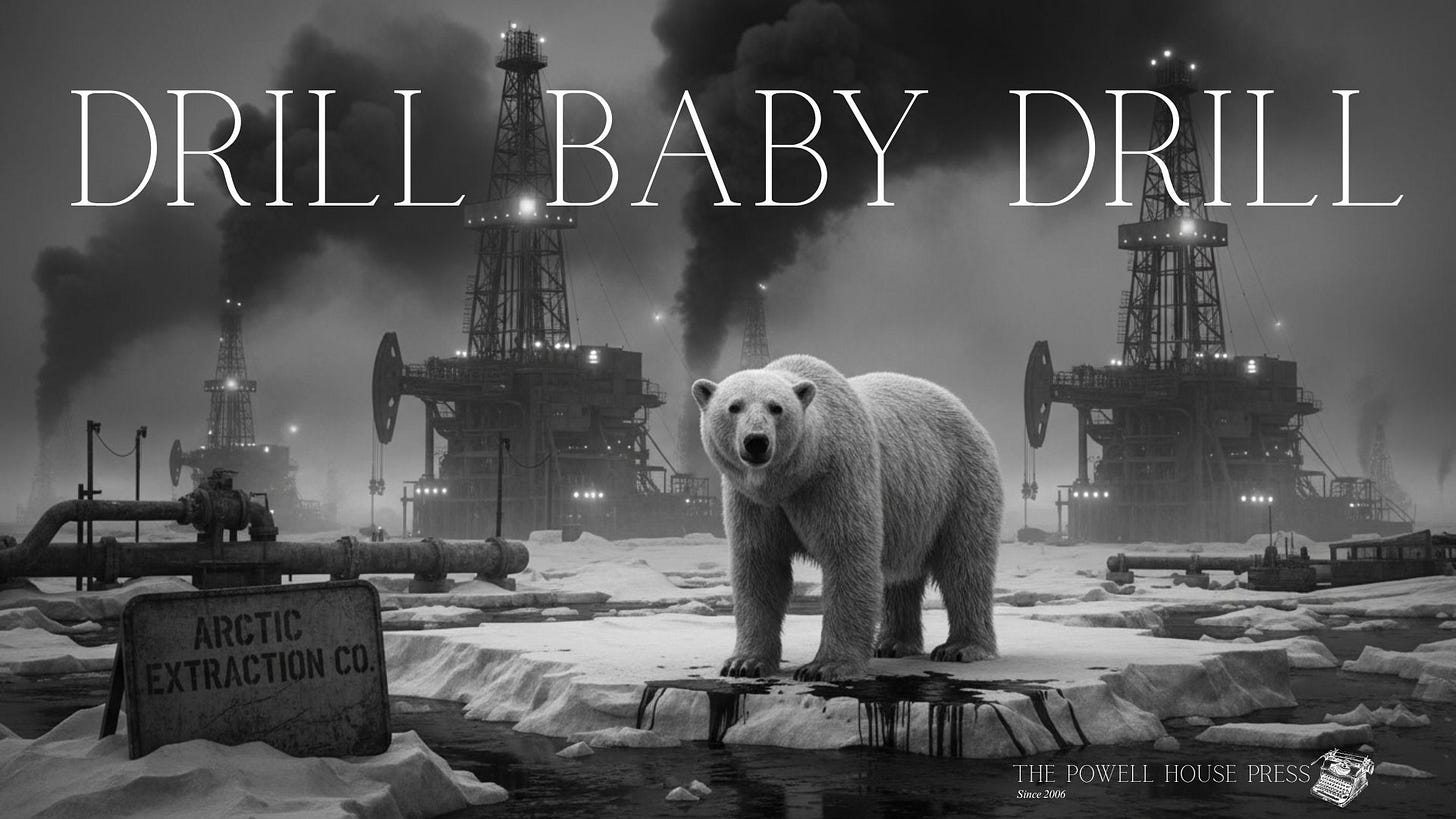
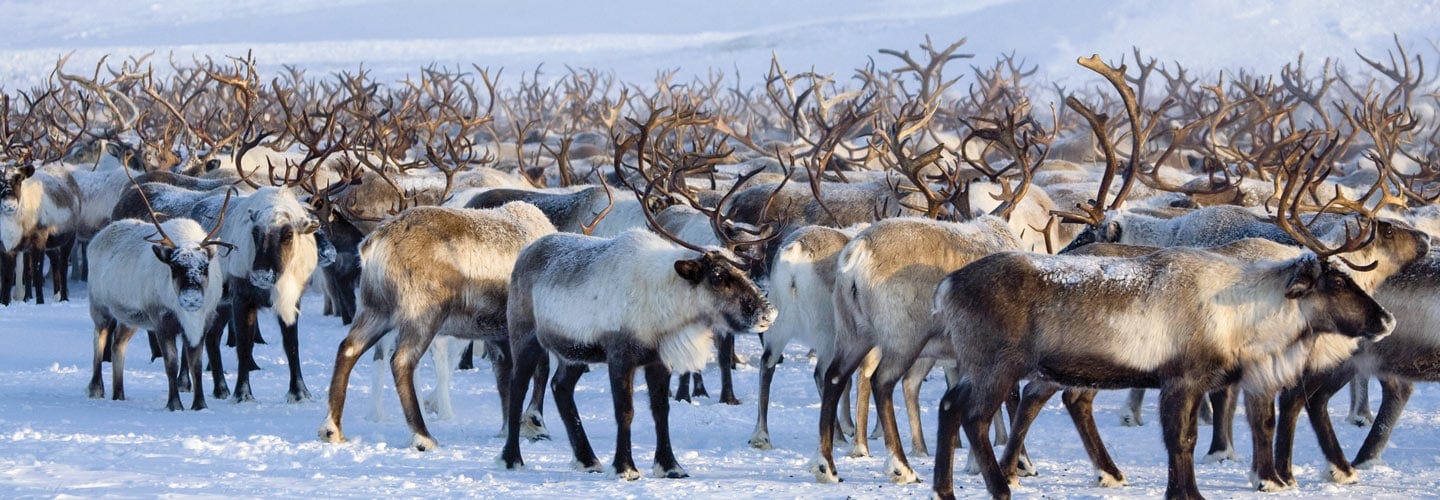
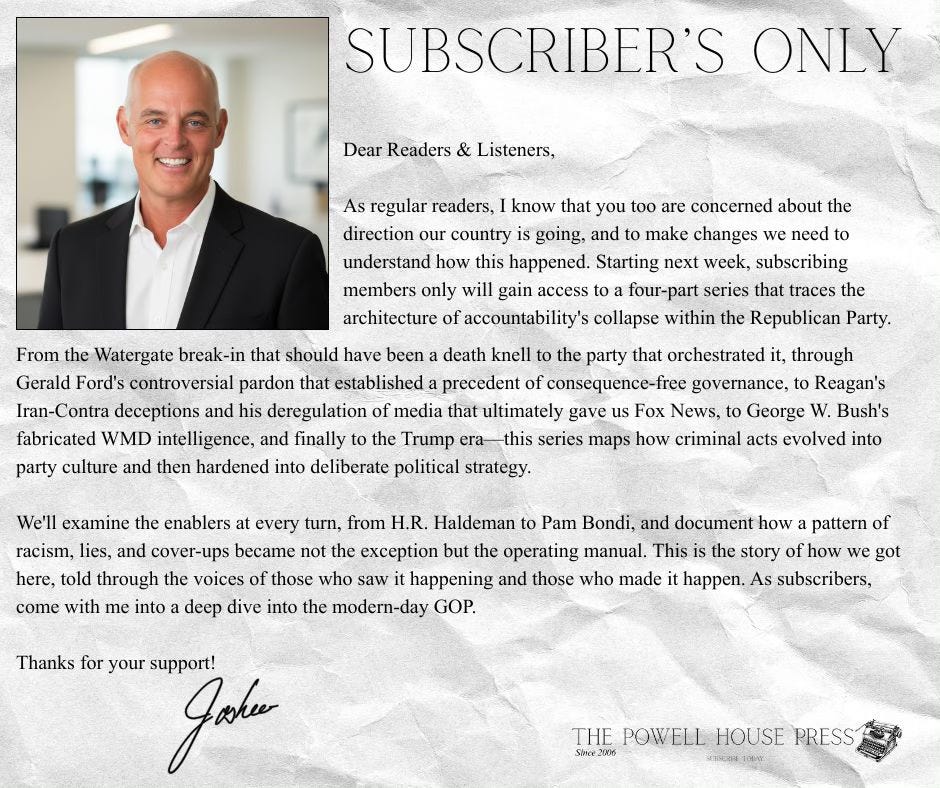
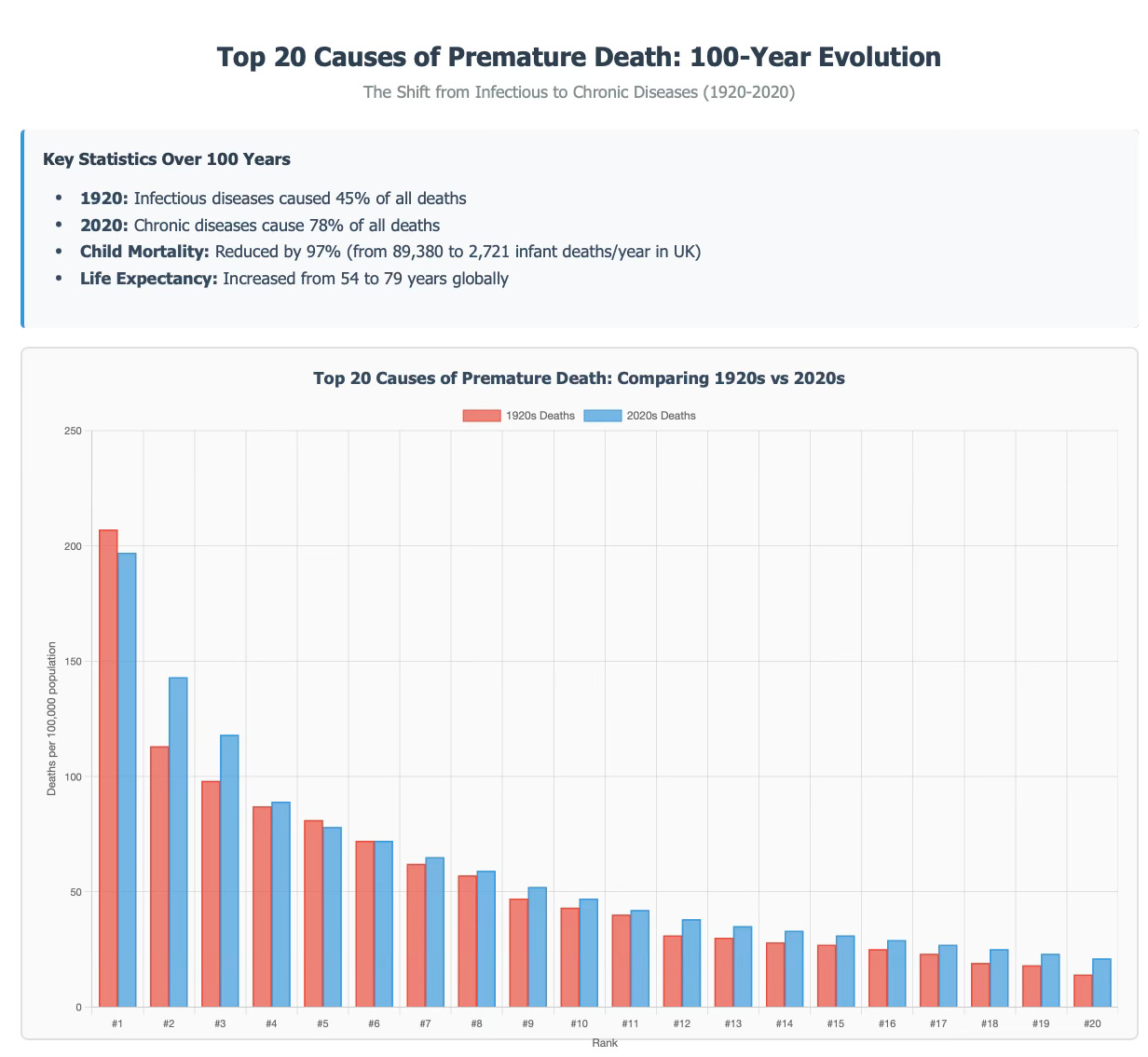
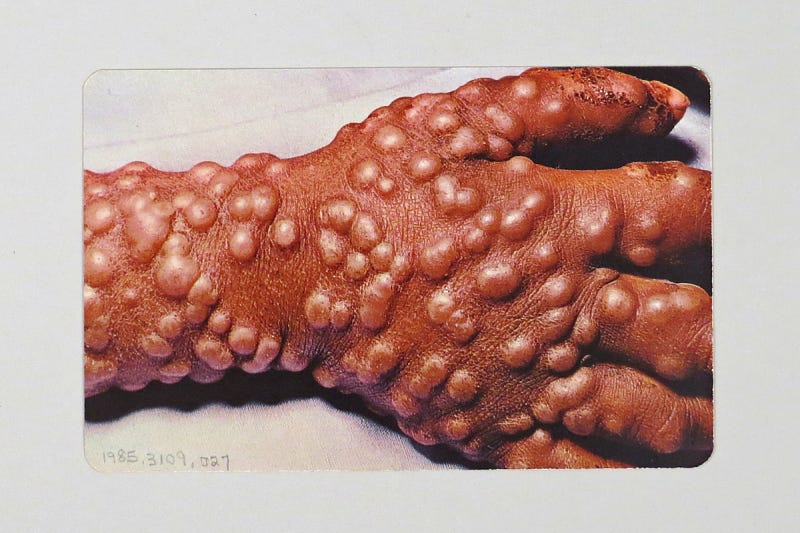

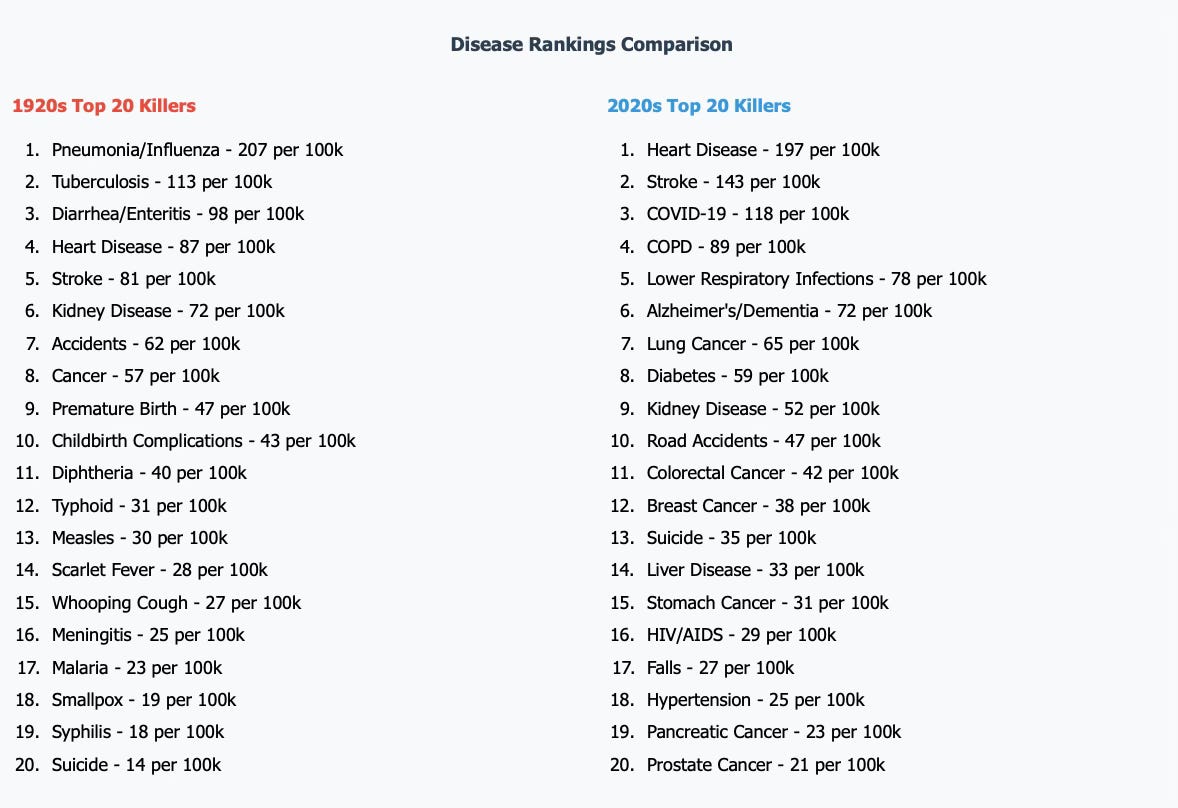


Maybe it would benefit this planet if the stupid humans died out. We are poor stewards.
On another topic:
Breast Cancer didn't even make the list of Top Killers in the 1920s. And yet in the 2020s it is #12 - 38 deaths per 100,000. Wonder what caused that massive leap in deaths?